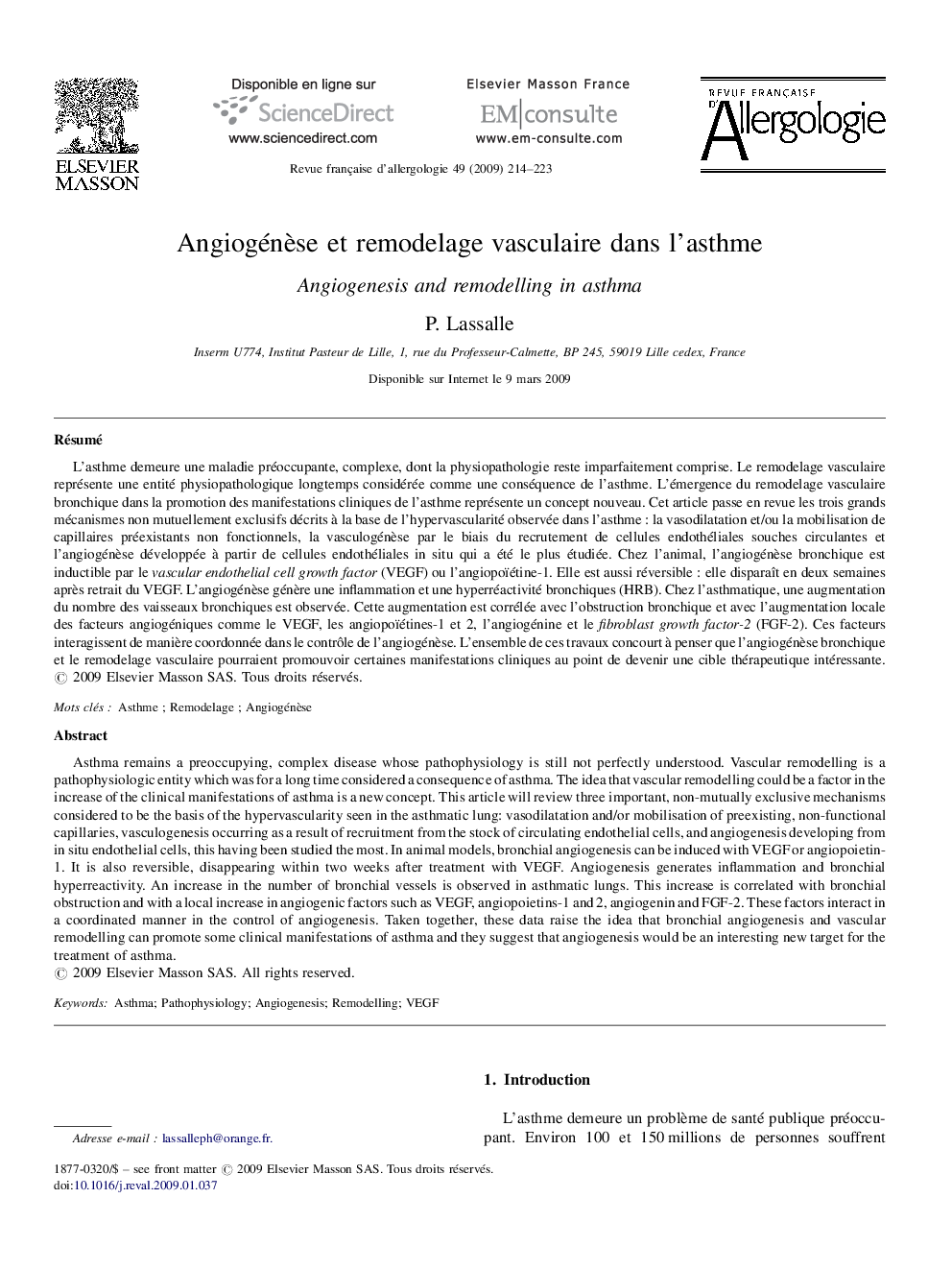| کد مقاله | کد نشریه | سال انتشار | مقاله انگلیسی | نسخه تمام متن |
|---|---|---|---|---|
| 3386841 | 1220675 | 2009 | 10 صفحه PDF | دانلود رایگان |

RésuméL’asthme demeure une maladie préoccupante, complexe, dont la physiopathologie reste imparfaitement comprise. Le remodelage vasculaire représente une entité physiopathologique longtemps considérée comme une conséquence de l’asthme. L’émergence du remodelage vasculaire bronchique dans la promotion des manifestations cliniques de l’asthme représente un concept nouveau. Cet article passe en revue les trois grands mécanismes non mutuellement exclusifs décrits à la base de l’hypervascularité observée dans l’asthme : la vasodilatation et/ou la mobilisation de capillaires préexistants non fonctionnels, la vasculogénèse par le biais du recrutement de cellules endothéliales souches circulantes et l’angiogénèse développée à partir de cellules endothéliales in situ qui a été le plus étudiée. Chez l’animal, l’angiogénèse bronchique est inductible par le vascular endothelial cell growth factor (VEGF) ou l’angiopoïétine-1. Elle est aussi réversible : elle disparaît en deux semaines après retrait du VEGF. L’angiogénèse génère une inflammation et une hyperréactivité bronchiques (HRB). Chez l’asthmatique, une augmentation du nombre des vaisseaux bronchiques est observée. Cette augmentation est corrélée avec l’obstruction bronchique et avec l’augmentation locale des facteurs angiogéniques comme le VEGF, les angiopoïétines-1 et 2, l’angiogénine et le fibroblast growth factor-2 (FGF-2). Ces facteurs interagissent de manière coordonnée dans le contrôle de l’angiogénèse. L’ensemble de ces travaux concourt à penser que l’angiogénèse bronchique et le remodelage vasculaire pourraient promouvoir certaines manifestations cliniques au point de devenir une cible thérapeutique intéressante.
Asthma remains a preoccupying, complex disease whose pathophysiology is still not perfectly understood. Vascular remodelling is a pathophysiologic entity which was for a long time considered a consequence of asthma. The idea that vascular remodelling could be a factor in the increase of the clinical manifestations of asthma is a new concept. This article will review three important, non-mutually exclusive mechanisms considered to be the basis of the hypervascularity seen in the asthmatic lung: vasodilatation and/or mobilisation of preexisting, non-functional capillaries, vasculogenesis occurring as a result of recruitment from the stock of circulating endothelial cells, and angiogenesis developing from in situ endothelial cells, this having been studied the most. In animal models, bronchial angiogenesis can be induced with VEGF or angiopoietin-1. It is also reversible, disappearing within two weeks after treatment with VEGF. Angiogenesis generates inflammation and bronchial hyperreactivity. An increase in the number of bronchial vessels is observed in asthmatic lungs. This increase is correlated with bronchial obstruction and with a local increase in angiogenic factors such as VEGF, angiopoietins-1 and 2, angiogenin and FGF-2. These factors interact in a coordinated manner in the control of angiogenesis. Taken together, these data raise the idea that bronchial angiogenesis and vascular remodelling can promote some clinical manifestations of asthma and they suggest that angiogenesis would be an interesting new target for the treatment of asthma.
Journal: Revue Française d'Allergologie - Volume 49, Issue 3, April 2009, Pages 214–223